Accepted Scientific Name: Fenestraria rhopalophylla (Schltr. & Diels) N.E.Br.
Gard. Chron. 1927, Ser. III. lxxxii. 263.
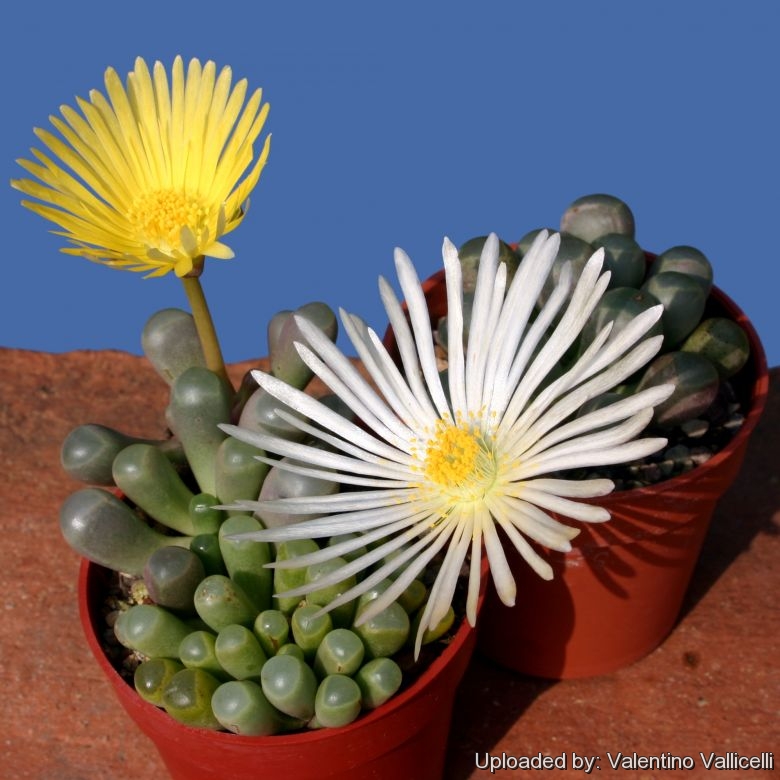
Mesembryanthemum rhopalophyllum (Fenestraria rhopalophylla) Photo by: Valentino Vallicelli
Commonly called "Baby Toes" has small club-shaped leaves with fenestrate ends and form large clumps by offsetting. Flowers colours range from pure white to rich golden yellow.
Origin and Habitat: Coastal South Africa from Namaqualand in the Northern Cape to Luderitz in Namibia.
Habitat: Grows in areas with sandy or calciferous soils. The plants occur in very dry areas with winter-rainfall of only 100 mm or less. In the wild, the they grows mostly buried by sand. The transparent fenestrate leaf tips are often above the sand and allow light into the leaves for photosynthesis.
Synonyms:
See all synonyms of Fenestraria rhopalophylla
Common Names include:
ENGLISH: Window Plant, Baby Toes
AFRIKAANS (Afrikaans): Vensterplant
Description: Fenestraria rhopalophyllaSN|11322]]SN|11322]] is an evergreen mat forming geophyte, mainly subterranean with just the tips of the leaves appearing above the soil. Fenestraria is a monotypic genus comprising only one specie and one subspecies. On each leaf of this plant there is a transparent window-like area at the top, it is for these window ( in Latin “fenestra”) that the genus name is derived from.
Stem: Not present or very reduced.
Leaves: Club-shaped flat or rounded on top, often partially buried with translucent, window-like tips on top to admit light. They are smooth and have a waxy layer.
Roots: Thick.
Flowers: Medium-large, white to yellow, solitary or in groups of up to three. They are borne on long pedicels, five sepals with membraneous margins are present, many petals occur in one to several whorls, fine stigmas spread up from the centre of the flower.
Flowering time: From mid-winter (or autumn) to early spring.
Remarks: Fenestraria rhopalophyllaSN|11322]]SN|11322]] appears very similar to Frithia pulchraSN|11568]]SN|11568]], though the leaves are a slightly different shape and F. rhopalophylla has yellow flowers, compared to the pink flowers of F. pulchra.
Subspecies, varieties, forms and cultivars of plants belonging to the Fenestraria rhopalophylla group
Notes: Fenestraria rhopalophyllaSN|11322]]SN|11322]] is a choice example of the window-leaf ( fenestrate leaf) adaptation found in many other succulent species like Peperomia columnella, Lithops karasmontanaSN|12138]]SN|12138]], Haworthia truncataSN|11540]]SN|11538]], Ophthalmophyllum friedrichiaeSN|14645]]SN|14645]], etc. These windowed plants usually grows buried in the ground with only the upper truncated portion of the thick, succulent leaves visible. Both the coalescent leaf pair of Lithops (shaped like an inverted cone) and the leaves of the other windowed plants have a more or less upright position with the leaf tips at the soil surface or protruding only a little from the soil. The leaf tips either are rounded or flattened. This windows leaf tip is free of green pigments. The greater part of the photosynthetic leaf surface, the mantle, is not exposed directly to sun light since the leaf is embedded into the soil and the solar radiation is transmitted by the colourless water storage tissue to the assimilatory tissue, so the photosynthetically active mantle gets light only from inside the leaf and not across the epidermis. Moreover this light is more or less evenly dispersed over the whole assimilatory tissue since the water storage tissue disperses the solar radiation. All species of Lithops and Ophthalmophyllum have coloured windows that matches with the colours of the soil and the pebbles of the plant's habitat. While other window plants such as Haworthia maughaniSN|11538]]SN|11540]]i have dark green pigmented window areas. This green colour, however, does not result from a pigmentation of the window area but is the result of light that penetrates the window and is transmitted across the water storage tissue.
Bibliography: Majoer references and further lectures
1) Linda R. Berg “Introductory Botany: Plants, People, and the Environment” Cengage Learning, 02/Mar/2007
2) Dieter J. Von Willert “Life strategies of succulents in deserts: with special reference to the Namib desert” CUP Archive, 1992
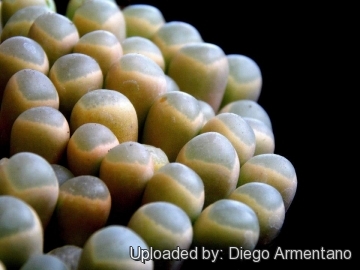 Mesembryanthemum rhopalophyllum (Fenestraria rhopalophylla) Photo by: Diego Armentano
Mesembryanthemum rhopalophyllum (Fenestraria rhopalophylla) Photo by: Diego Armentano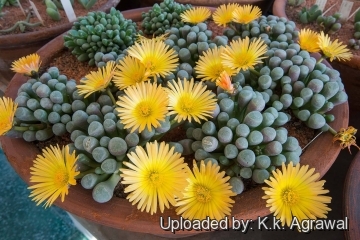 Mesembryanthemum rhopalophyllum (Fenestraria rhopalophylla) Photo by: K.k. Agrawal
Mesembryanthemum rhopalophyllum (Fenestraria rhopalophylla) Photo by: K.k. Agrawal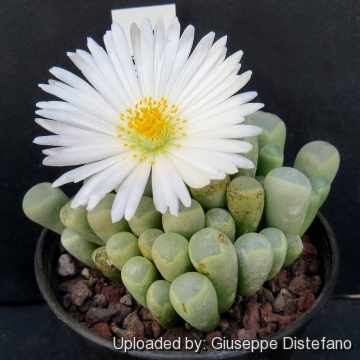 Mesembryanthemum rhopalophyllum (Fenestraria rhopalophylla) Photo by: Giuseppe Distefano
Mesembryanthemum rhopalophyllum (Fenestraria rhopalophylla) Photo by: Giuseppe Distefano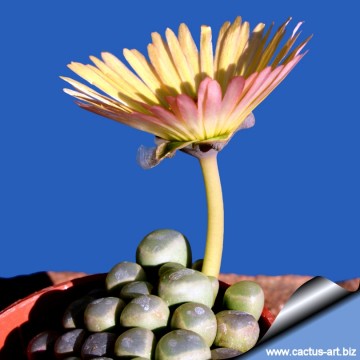 Mesembryanthemum rhopalophyllum (Fenestraria rhopalophylla) Photo by: Cactus Art
Mesembryanthemum rhopalophyllum (Fenestraria rhopalophylla) Photo by: Cactus Art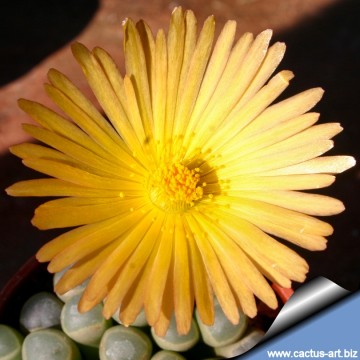 Mesembryanthemum rhopalophyllum (Fenestraria rhopalophylla) Photo by: Cactus Art
Mesembryanthemum rhopalophyllum (Fenestraria rhopalophylla) Photo by: Cactus Art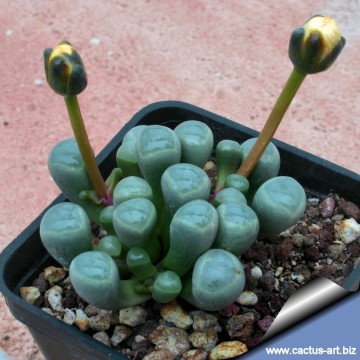 Mesembryanthemum rhopalophyllum (Fenestraria rhopalophylla) Photo by: Cactus Art
Mesembryanthemum rhopalophyllum (Fenestraria rhopalophylla) Photo by: Cactus Art Half growing and the other half dormant !! (Fenestraria rhopalophylla) Photo by: K.k. Agrawal
Half growing and the other half dormant !! (Fenestraria rhopalophylla) Photo by: K.k. Agrawal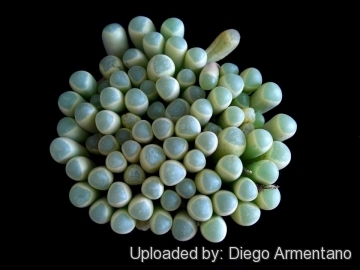 Mesembryanthemum rhopalophyllum (Fenestraria rhopalophylla) Photo by: Diego Armentano
Mesembryanthemum rhopalophyllum (Fenestraria rhopalophylla) Photo by: Diego ArmentanoCultivation and Propagation: They are relatively easy to grow.
Soil: They prefer sandy, mineral-rich soil and require a very good drainage and protection from excessive water.
Fertilizer: Be careful not to apply too much fertilizer.
Watering: They require little water otherwise its epidermis breaks (resulting in unsightly scars). They need light sporadic watering during their winter growing period and require only very light sprinkling in summer as they are extremely rot prone if kept too moist when the heat turns off their growth cycle. Water regularly in spring and autumn, soak the compost fully but allow it to dry out perfectly between waterings. Nearly all problems occur as a result of overwatering and poor ventilation especially when weather conditions are dull and cool or very humid.
Exposure: They do well in full blazing sun, but keep cool and shaded in summer.
Hardiness: Hardy to -4°C.
Maintenance: Avoid to repot frequently. This plant may stay in the same pot for many years. Plants grown in larger containers have frequently relatively poor flowers. They might improve when the plants are given their own, small individual pots.
Propagation: They can be reproduced both by cuttings and seeds. Take the cutting from a grown-up mother plant. Each cutting must contain one or more heads along with a fraction of root.
Your Photos
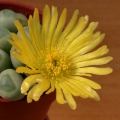
by Valentino Vallicelli
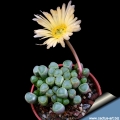
by Cactus Art

by Cactus Art

by K.k. Agrawal

by K.k. Agrawal























